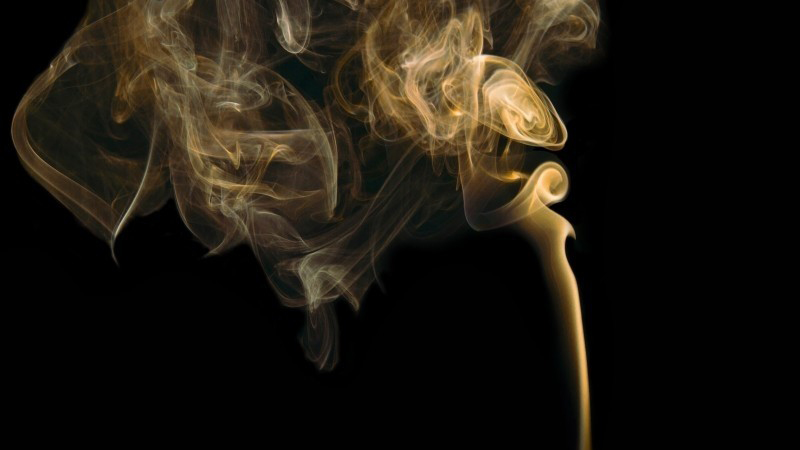5 Ways to Remove Cigarette Smell from Books
Recently one of my students asked me how to remove cigarette smell from books. I’m quite lucky not to have faced that problem ever in my life. My close relatives and I do not smoke, and I never bought any second hand things that needed deodorizing.
However, I understand that anyone can face a need to remove cigarette, tobacco, smoke or some other smell from books (or other objects) at some moment. You may buy a smelly book on eBay, or have a document that survived fire, or move from your cigarette-smoking parents’ house to a new place.
To reply my student’s question I had to undertake a small internet research. Looks like all possible solutions could be divided into five groups:
- Ventilate the book;
- Heat the book;
- Replace an unpleasant odor with another one;
- Use absorbing agents to pull the smell from the book;
- Wash the book.
You may also mix the solutions for the best result. Let’s dive into further details below.
Preparation
Before applying any methods, it is better to clean the cover and dust the pages of the book. It wouldn’t remove all the smelly particles absorbed by the paper, but it would only do better for the book.
You may also use water or vinegar/alcohol solution while cleaning the cover (depending on the covering material). Please research the process before starting to avoid damaging the book.
Ventilating the Book to Remove Cigarette Smell
It is arguably the simplest solution. However, it may take much more time to reach a considerable progress.
Open the book and set it on its tail edge. Spread the pages to allow air circulation.
You may use a ventilator indoors, or put you book outdoors, if the weather is dry. If airing outside the building, it is safer to set a timer and continuously check the conditions. Otherwise, you may end with a book that has lost that cigarette smell, but is wet and crumpled instead.
Heating the Book
This method may be used in conjunction with the previous one. You just need to leave the book under the sun.
Alternatively, you may use a hairdryer or a heat gun. Just remember that sunlight and excessive heat may damage paper objects, make pages brittle and cause discoloration.
Using Air Fresheners, Perfumes, Coffee Beans, etc. to Replace the Unpleasant Smell
I wouldn’t recommend that method. After all, our goal was to remove the unpleasant smell, not to replace it with something else. However, this solution is mentioned in the discussions as often as any other is, and I decided to include it to the list. Maybe for some of you this may be the preferable solution.
I should also mention that spraying anything on paper may leave stains or damage the material in some other way. It would be better to test the effect on waste paper prior to using air freshener or perfume on the book.
It would improve the efficiency of the process if you put your book into a ziplock bag or some other enclosed plastic container for several hours or even days.
While using coffee beans, ground coffee, or any other agents that would allow you to absorb and replace the original unpleasant smell, I would recommend to use the same procedure as described below.
Using Absorbing Agents to Remove Tobacco, Smoke or Any Other Smell from Books
As mentioned before, it is better not to allow agents you are using to remove an unpleasant smell to touch the paper. Even if you are using vinegar, alcohol or some other solutions, you have to be sure they wouldn’t damage the object or that the damage would be compensated by the positive outcome of the cleaning process.
There are several agents mentioned more than anything else in the context of removing unpleasant odors from books (and other objects):
- Baking soda;
- Clay kitty litter;
- Charcoal or activated carbon;
- Cedar chips;
- Special granulated odor eliminators.
You may just place them (or sprinkle them, in case of baking soda) along with the book in a ziplock bag. However, it is much better to make a special closed container for deodorizing.
Photos from the Parks Library Preservation blog
Here is a nice video tutorial on how to make that sort of a container:
As an additional measure you may fill the rest of the container with crumpled newspapers or some other porous paper that would help to absorb the smell faster.
Leave the objects for several days in that closed container. You may need to check the progress from time to time and change the absorbing agent.
I would also put dryer sheets to the same category. You should place several of them between the pages of the book, or just in the same closed container. However, it may be reasonable to use used dryer sheets, to avoid staining.
Washing the Book
The last option is the trickiest one. You should go for it if you are sure that your actions wouldn’t damage the book even more in the end.
Please check book conservation and restoration tutorials prior to using this method.
Hope that would help you to make your book collection even better. If you have anything to add, please share your thoughts in the comments section below.
Read More
- Stinky Books at Parks Library Preservation
- Collection Emergencies at Library of Congress
- Getting Rid of Smoke Smell in Books and Paper Products at wikiHow
Please Support us on Patreon!
 The minimum level of contribution is only $1 per month.
The minimum level of contribution is only $1 per month.
Moreover, starting with the pledge level of $3, you will get a digitized vintage book about bookbinding, book history, or book arts each month from us!
These pledges help iBookBinding to continue its work and bring more information about bookbinding and book arts to you!










